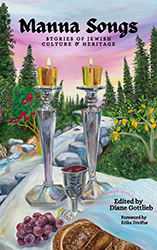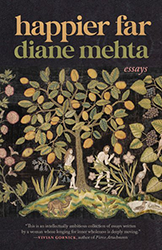By
– August 31, 2011
When darkness of war, prison, illness, death, or other horror touches gifted writers, and they write about it, how are they transformed, and how does reading their writing impact us? Kenneth Sherman, a Canadian poet and essayist, explores these issues in this haunting collection of penetrating, pensive essays, published in a beautiful paperback edition, with thick textured paper and lovely prints from steel engravings.
After September 11th, 2001, Sherman sought out writers who had undergone and witnessed extreme experiences and transmuted them into prose and poetry. With the exception of a number of essays, including one about how his great-grandfather rejected Toronto in the 1930’s and returned home to Poland only to be killed by the Nazis a few years later; one that treats Wells’s “The Island of Dr. Moreau” as a sort of literary premonition of the dehumanizing fusion of science and fascism; and one on Yiddish as a Jewish language, with a focus on Ruth Wisse’s book, The Modern Jewish Canon, the other 19 essays largely focus on such writers.
In one essay Sherman traces the transformation of a sad Hasidic story of Rabbi Nachman’s in the writings of Buber, Kafka, and Malamud, and in another, he re-examines the works and life of Rupert Brooke, the British poet know for his romanticizing of self-sacrifice for Britain’s glory in World War I, before dying young himself, whom Sherman contrasts with Wilfred Owen, Brooke’s contemporary who also died young, and wrote war poetry of a far less romantic strain. Other poets Sherman examines include Robert Lowell, Elizabeth Bishop, Ted Hughes, Zbignew Herbert, and Czeslaw Milosz.
Sherman also looks closely at Primo Levi and at Varlam Shalamov, the latter of whom Sherman adjudges as being the “supreme artist” of those authors who survived Nazi and Soviet camps. Shalamov’s book of stories of Siberian camp life, “Kolyma Tales,” is littleknown here, but has been translated, and according to Sherman, deserves a wider audience. In another essay, he writes about the Soviet journalist Vassily Grossman, who wrote searingly of what happened at Treblinka. Sherman also examines how novelists Martin Amis and John Updike treated 9/11 in their books, The Second Plane: September 11: Terrorism and Boredom (Amis), and Terrorist (Updike).
In separate essays Sherman examines the diarists Chaim Kaplan and Anne Frank. Kaplan chronicled almost three years of his life in the Warsaw Ghetto before it was liquidated, and part of this diary has been published in “Scroll of Agony: The Warsaw Diary of Chaim A. Kaplan”. In looking at Anne Frank’s diary Sherman sees it less as a Holocaust document than as a “record of an existential quest whose theme is the making of the self.”
In “Toward the Earth: Poetry and 9/11,” Sherman critically considers the poetry that has been written about 9/11. He feels that much of it was written too hastily; that the requisite distance in space and time for processing such trauma wasn’t widely respected. In “The Angel of Disease” he looks at how writers close to those with chronic and terminal illnesses and who have themselves been afflicted have treated the subject of suffering. “Writing is alchemy that transforms pain into something we value,” he writes. These, like all the essays collected in this book of extraordinary insight and sensitivity, are about art itself (here confined to writing), asking “what is art” and “what is art good for” and Sherman consistently affirms the power of art to make suffering not only bearable but meaningful.
Eric Ackland is a freelance writer.



